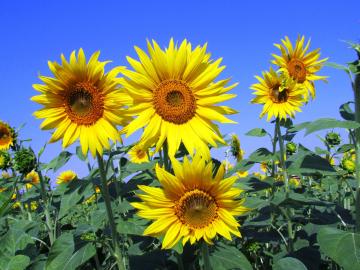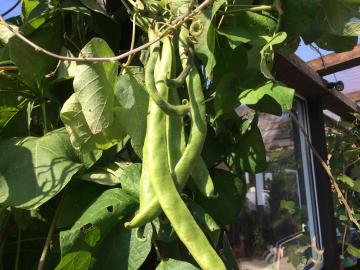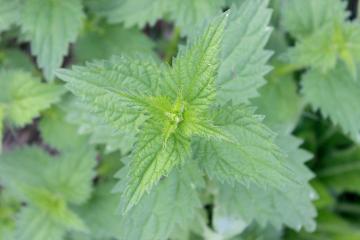
Close-up of an orange marigold.
Angela Altomare
How much do you know about companion planting? It takes more than good soil, sun, and nutrients to ensure success in a garden. Plants have to grow well with one another.
Learn some of the ways that plants support each other—and see how others compete—to get better results in the garden this season.
Vegetable Garden Companions
Some plants, especially herbs, act as repellents, confusing insects with their strong odors that mask the scent of the intended host plants.
- Dill and basil planted among tomatoes protect the tomatoes from hornworms.
- Sage scattered about the cabbage patch reduces injury from cabbage moths.
- Marigolds are as good as gold when grown with just about any garden plant, repelling beetles, nematodes, and even animal pests.
- Some companions act as trap plants, luring insects to themselves. Nasturtiums, for example, are so favored by aphids that the devastating insects will flock to them instead of other plants.
- Carrots, dill, parsley, and parsnip attract garden heroes—praying mantises, ladybugs, and spiders—that dine on insect pests.
- Much of companion planting is common sense: Lettuce, radishes, and other quick-growing plants sown between hills of melons or winter squash will mature and be harvested long before these vines need more leg room.
- Leafy greens like spinach and Swiss chard grown in the shadow of corn.
- Bush beans tolerate the dapple shade that corn casts and, since their roots occupy different levels in the soil, don’t compete for water and nutrients.
See our free plant companions chart for ten common vegetables.
Photo Credit: Margo Letourneau
Incompatible Edibles

Plants that are not compatible with each other are sometimes called combatants. Here are a few:
- While white garlic and onions repel a plethora of pests and make excellent neighbors for most garden plants, the growth of beans and peas is stunted in their presence.
- Potatoes and beans grow poorly in the company of sunflowers, and although cabbage and cauliflower are closely related, they don’t like each other at all.
One of the keys to successful companion planting is observation. Record your plant combinations and the results from year to year, and share this information with other gardening friends. Companionship is just as important for gardeners as it is for gardens.
More Companion Plantings
 Even plants in the woodlands are companions:
Even plants in the woodlands are companions:
- Blueberries, mountain laurel, azaleas, and other ericaceous (heath family) plants thrive in the acidic soils created by pines and oaks.
- Shade-loving plants seek the shelter provided by a wooded grove.The shade-lovers in return protect the forest floor from erosion with their thick tangle of shallow roots.
- Legumes and some trees, such as alders, have symbiotic relationships with bacteria in the soil that help them to capture nitrogen from the air and convert it to fertilizer, enriching the soil so plants can prosper in their presence.
Strange Plant Pairings
 Sometimes plants may be helpful to one another only at a certain stage of their growth. The number and ratio of different plants growing together is often a factor in their compatibility, and sometimes plants make good companions for no apparent reason.
Sometimes plants may be helpful to one another only at a certain stage of their growth. The number and ratio of different plants growing together is often a factor in their compatibility, and sometimes plants make good companions for no apparent reason.
- You would assume that keeping a garden weed-free would be a good thing, but this is not always the case. Certain weeds pull nutrients from deep in the soil and bring them close to the surface. When the weeds die and decompose, nutrients become available in the surface soil and are more easily accessed by shallow-rooted plants.
- Perhaps one of the most intriguing examples of strange garden bedfellows is the relationship between the weed stinging nettle and several vegetable varieties. For reasons that are unclear, plants grown in the presence of stinging nettle display exceptional vigor and resist spoiling.








 Even plants in the woodlands are companions:
Even plants in the woodlands are companions: Sometimes plants may be helpful to one another only at a certain stage of their growth. The number and ratio of different plants growing together is often a factor in their compatibility, and sometimes plants make good companions for no apparent reason.
Sometimes plants may be helpful to one another only at a certain stage of their growth. The number and ratio of different plants growing together is often a factor in their compatibility, and sometimes plants make good companions for no apparent reason.